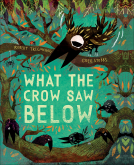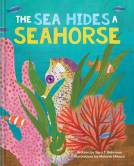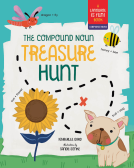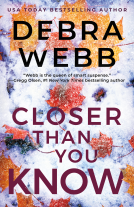
Camino de Santiago
The ancient Way of Saint James pilgrimage route from the French Pyrenees to Santiago de Compostela
by Sergi Ramis
This title was previously available on NetGalley and is now archived.
Send NetGalley books directly to your Kindle or Kindle app
1
To read on a Kindle or Kindle app, please add kindle@netgalley.com as an approved email address to receive files in your Amazon account. Click here for step-by-step instructions.
2
Also find your Kindle email address within your Amazon account, and enter it here.
Pub Date Mar 02 2021 | Archive Date Mar 31 2021
Talking about this book? Use #CaminodeSantiago #NetGalley. More hashtag tips!
Description
The first one-volume walking guide to the most popular long-distance route walked by British tourists in Europe. With the advent of low-cost airlines it is as cheap for the British tourist to go to mainland Europe as to the extremities of the UK -- which is why in recent years continental long-distance routes have become increasingly popular with the British walker. Most popular by far is El Camino de Santiago de Compostela, the ancient Christian pilgrimage route that has been travelled for over a thousand years to the Cathedral of Santiago de Compostela, where, legend has it, the bones of St James are buried. This guide follows the most popular route, starting at St Jean-Pied-de-Port in south-west France and heading all the way westwards across northern Spain for 800km to finish at Cape Finisterre on the Atlantic coast. Now, extending its series of Trail Guides beyond the UK for the first time, Aurum publishes the first compact one-volume guide to the path, fully illustrated with photography, it offers comprehensive route directions, sectional route maps, gradient profiles, a history of the route and details of sights to see and separate chapter guides to the main cities along the way like Pamplona, and a list of accommodation en route.
Available Editions
| EDITION | Other Format |
| ISBN | 9780711256132 |
| PRICE | $22.99 (USD) |
| PAGES | 208 |
Featured Reviews
 Terje O, Reviewer
Terje O, Reviewer
I haven't done the Camino, but I know Spain and I know hiking, and the information here seems very valuable for anyone on the Camino, both for the routes and other useful facts and tips. The book has a beautiful layout, and I'm glad the route to Finisterre is included. There are a few things I don't agree with, like using "the Way" instead of "the Camino", and I like all my maps to be north up.
A Whole New Dimension in Arm-Chair Travel
This is an excellent route guide and affords the reader a reasonably detailed overview of the entire Camino de Santiago.
It's organized segment by segment, so one gets a sense of the ins and outs and ups and downs of each link in the trail, as well as a brief introduction to sights and villages along the way. (As to ups and downs, that's literally true since there are excellent gradient maps.)
The book is light on details about accommodations, food options, and similar details. If actually walking the path I'd want another guide or two, good topo maps, publications from the groups and organizations that care for the trail, and loads of blog and website info from the internet. After all, this is not a walk to be taken lightly. (That said, there are about fifty pages of accommodations listings and the like, organized alphabetically by town, so there's info here to start working with.)
In short, then, for general introduction and orientation purposes the book achieves what it sets out to do, and certainly helps to both fire up the spirit and fairly lay out the challenge.
Now, I got a lot out of this book, because I cheated. It is very unlikely I'm ever going to walk this classic trail. But I came closer than ever expected. Follow me here. Fire up this book in Kindle format on your desktop computer. Or open the hard copy on your desk. Then, fire up the latest version of Google Maps, (and set it next to the Kindle book on your desktop). Ask Google to set a route from Saint-Jean-Pied-de-Port to Santiago de Compostela. Be sure to click on the "pedestrian" option. Voila! The route pops up as a series of little blue dots. You'll want to magnify and focus down on the start of the trail. Now, find the little blue "Google Man" in the lower right corner of the map and drag him and drop him on the first dot of the trail. Up pops a view of the trail, as seen by the Google Man. By clicking on the trail ahead you can walk the whole thing, pausing to take in 360 degree views. Except for a few places where the trail is off road and not recorded by Google you can walk almost the whole trail, and you can certainly jump ahead to hit the high points. (I loved crossing the Pyrenees; very "For Whom the Bell Tolls", and acres of sheep.)
So, this would be a great starting place for someone serious about the Way of Saint James, and is a tremendous entertainment for the arm-chair explorer. Win-win.
(Please note that I received a free advance will-self-destruct-in-x-days Adobe Digital copy of this book without a review requirement, or any influence regarding review content should I choose to post a review. Apart from that I have no connection at all to either the author or the publisher of this book.)
 John L, Reviewer
John L, Reviewer
This write-up comes with a confession – the reviewer has not done anything about using this guide for its proper purpose. All I've done is sat on my arse and looked at a digital copy of it. This is a review that cannot hope to prove how accurate the information is, it cannot compare the maps' approach to the reality, and it cannot go anywhere to confirming or denying the tips included. But what I did see, as a constant user of travel guides of all stripes, is a very decent volume indeed. The introduction is basic, but in a good way – not pandering to every idiot that thinks they want to do The Way, nor irritating the expert with sucking-egg lessons for pages on end. We get the basics of what life might be like on the walk, what considerations we should have with the equipment we take and the accommodations we'll face, and we're off.
The stages are, I guess, the usual ones - the typical chunks the walk is split up in, so that you get from sensible source of catering and sleeping to the next source all in one (relatively) comfortable shift. (It might be noted too that the 34 chunks here get us all the way to Finisterre as well, and not just Santiago.) Further splits in the text give us the format of a paragraph between every major point of note, in line with the maps showing us how many clicks are between each settlement. Each and every stage apart from the final three beyond our aim gets the same four-page format, so you're never more than a page-turn away from the full-page map, which given the 5x9 vertical letterbox format is easily consulted. It seemed to me that we get enough data in the text to guide us – the author has clearly trodden The Way and knows where red herrings, diversions, possible confusion and lack of signage becomes a problem. It also seemed to me that pictures and tiny factoids are used judiciously, allowing room for any and all needed information.
We also get enough gen on the major cities, with a walking guide (oh, how apt) to their main sites. Where information seemed lax was on the diversions, some of which seemed surprisingly long, and certainly deserved a description of their own, even if they are less official and much less historical. But once the author's pen has got us to the endpoint, we get a potted history (bit late, that), and how to cycle it, and the final key part, being the gazetteer of all the hostelries and their facilities, meaning that (until details get out of date) the planning, reservations and timings can all be thoroughly nailed down from anywhere in the world. The bulk of the book is, however, the section of directions, and beyond a few changes of land-use that won't age. The Way is firmly, er, in the way of developing its course, and I am confident these pages reflect what it will be like to walk it for many a year to come. Four and a half stars.
 jc C, Educator
jc C, Educator
Camino de Santiago is an excellent reference and travel guide for anyone thinking about doing all or part of the pilgrimage trail. There are details on the routes, pictures and a wealth of other tips and tricks. The book is well written and organised and really gives you a feel for the journey. Used in conjunction with Google you can really follow the trail. It is a brilliant starting point for anyone planning the pilgrimage but also for anyone just wanting to dream and follow it from their armchair !
 Richard L, Reviewer
Richard L, Reviewer
This book is a perfect companion for the pilgrim embarking of the Camino de Santiago. Some have said it is too bulky to take on your adventure, but based my experience of long distant walks (The Pennine Way for one, 270 miles) it is the type of guide book I would look to take in my backpack.
Now more people, outside a sense of pilgrimage are choosing this type of adventure so the book I’m reviewing also fits into a secular mindset. The beauty is in the journey and any shared endeavour and experience will bring, that of fleeting social pleasures as well as enduring friendships. The book again points this up and recommends the sense of engagement in the Way and the accommodation, services and welcome you might expect and be surprised about, especially in high season.
Finally this is one of several routes of pilgrim journeys to Santiago. This being the French one that takes you over the Pyrenees from St Jean-Pied-de-Port.
I have read criticism of this guide. That there are other sources of information, less pompous and controlling. While this is undoubtedly true, this is a long standing guide book which has been re-released in an updated form. It makes no attempt to make a case for not checking out other stuff and there would be little point in adding to its weight to have references and appendix of websites etc.
This is a basic route planner that breaks the trip down into easy and manageable stages with the advice to be flexible and adapt it for yourself based on fitness and time available. 30 walking days to complete 500 miles is about right in my opinion to get the best out of it, whereas in hours of daylight you can perhaps achieve 20-25 miles per stage if young and fit.
This is a guide book to the actual route to follow. With tips and an eyes on each step taken especially where routes diverge or signage is confusing. It talks about history, culture, food and places of interest.
It has a comprehensive list of pilgrim hostel throughout the way not just at the end of each stage. It is practical, economic and even has scope to write your own notes.
You will still need to read more widely, to boost knowledge, find tips and other healthy hints. There are Apps, blogs, websites, vlogs and numerous experiential books available.
Depending on your reasons for planning this walk you will need amongst other things more details in these areas:
Equipment advice, budgeting, clothes, washing and eating. General expectations and fitness requirement. Practical info on the pilgrims passport and getting it stamped. (This book mentions this and refers us to a website.)
Then others may want more spiritual information and motivation around pilgrims, pilgrimages and benefits others have gained.
But everyone needs to make preparations around travel to the start and home again from Santiago de Compostela.
Therefore you will need a guide like this one.
I especially liked the gradient graphs of height over distance. The time guides through the stage between each place of interest is very helpful. As a Walker I felt the author had taken each step, aware of safety where the road was a companion or needed to be crossed. Aware of arduous climbs, when to rest, stock up with provisions and the terrain under foot. He also spoke my language when he bemoaned sections where there was little shade, exposure to the wind, dangers of spending too long at altitude and the problems of decent or underfoot condition with twists and stumbles. Overcoming, the complaint of knees and the compounding stress of constant days walking day after day. Dehydration, the prospect of mirages on some sections and the times devoid of landmarks and blank horizons.
No book is a complete guide if it is to be a travel accompaniment; otherwise it would be by necessity too big to carry. But the beauty and the success of adventure will be the joy in preparation and planning.
The care in looking at the route and noting where you want to tarry, things to see and places to explore will help you succeed and overcome. All walks of this nature, help you understand yourself more, shed pounds and make new friends. The more you read before hand, the more excited you will become. It may just ensure this journey is not just a destination but a whole new outlook on life.
Readers who liked this book also liked:
Tomoka Shibasaki
General Fiction (Adult), Literary Fiction, Novellas & Short Stories
Sara T. Behrman
Children's Fiction, Outdoors & Nature, Parenting & Families
Phyllis T. Strupp
Health, Mind & Body, Nonfiction (Adult), Self-Help


















